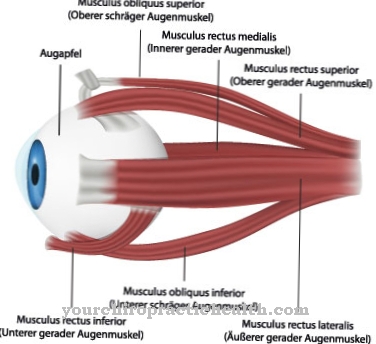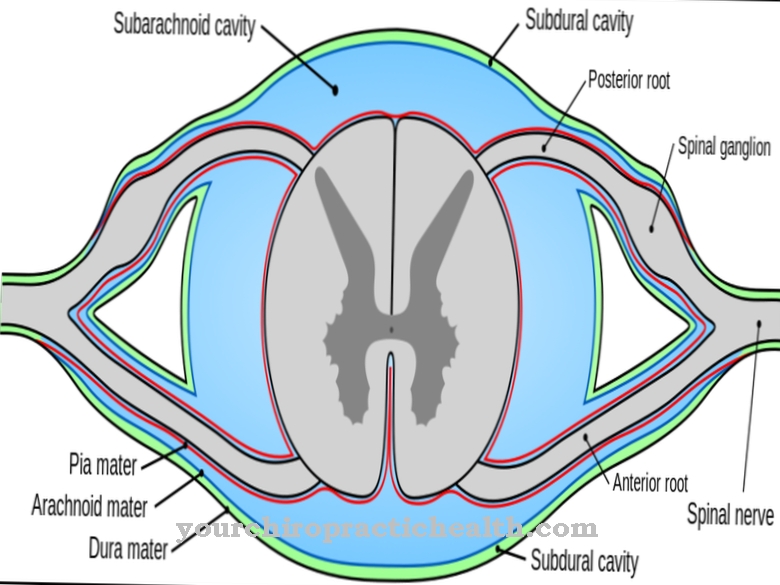The Endosonography is a gentle examination method that images certain organs from inside the body using ultrasound. The digestive organs and the chest cavity are examined particularly frequently with this relatively new diagnostic method. The advantages of endosonography are the freedom from radiation, the close proximity to the examined organ and the possibility of performing biopsies or therapeutic interventions at the same time.
What is endoscopic ultrasound?

Endosonography is an ultrasound that is not performed as a classic variant by moving the transducer on the skin, but instead delivers the images directly from inside the body.
This is made possible with the help of rigid or flexible endoscopes, which the examiner can insert directly into the organ systems to be clarified or into nearby body orifices. At the tip of the endoscope there is a small ultrasound probe that can be used to obtain particularly meaningful images, as it is ideally located directly on the tissue to be assessed, such as the mucous membrane of the stomach or intestines.
As with the classic sonography method, the recorded events inside the body can also be followed on the screen in parallel with endosonography. This is particularly useful if the ultrasound from inside the body is not only intended to detect inflammation, constrictions or tumors, for example, but also punctures from the tissue are to be made in parallel under visual control to round off the diagnosis.
Function, effect & goals
Endoscopic ultrasound has become an effective means, especially in the area of the gastrointestinal tract, as it provides extremely low-risk images from this region. The procedure of the examination is very similar to the gastroscopy (gastroscopy) or the colonoscopy (colonoscopy) - only with the difference that results from the ultrasound images recorded by the small probe.
This special instrument is only slightly thicker than the endoscopes that are used for ordinary mirroring. It is great for checking the condition of the walls of the esophagus and stomach, duodenum, and rectum. Even changes that are only a few millimeters in size can be detected with endosonography. Due to the early discovery, any tumors can be treated particularly well. Flexible endoscopes ensure that the doctor can look into places in the body that are difficult to access.
Particularly fine probes that can be inserted into the duct systems of the digestive system are suitable for detecting diseases in the area of the bile and pancreas. With the help of endoscopes equipped with special devices, tissue samples can be taken or cysts drained during the examination. If the findings are abnormal, initial statements can be made about the benign or malignant nature of a polyp or the depth at which a tumor is located in the tissue.
Endoscopic ultrasonography also has an important role in the area of rectal diseases: the introduction of the relatively thin endoscope with a transducer into the rectum enables control after hemorrhoidal operations, the clarification of defecation disorders and the search for benign or malignant tumors. In addition, low-stress follow-up care after cancer therapies is possible in this way. In the gynecological area, for example, when a woman complains of pain or persistent bleeding or is in early pregnancy, ultrasound is also performed inside the body with the vaginal ultrasound.
With the help of a rod-shaped device that has a transducer, a meaningful overview of the small pelvis is possible. Tumors, inflammation and various sources of bleeding can be detected. With pregnant women - without any dangerous radiation - the correct fit of the pregnancy and the timely development of the embryo can be checked. In the case of symptoms in the area of the respiratory tract or the chest, endosonography can also be used as part of a bronchoscopy. Here the bronchi can be thoroughly assessed from the inside and tissue samples can be taken for further clarification in the same diagnostic step.
Risks, side effects & dangers
Endosonography is an absolutely risk-free examination method when it comes to diagnostics using ultrasound waves. It also poses no danger to pregnant women and infants. In contrast to computed tomography (CT), magnetic resonance tomography (MRT) and scintigraphy, which is part of the field of nuclear medicine, endosonography, like classic ultrasound, works without contrast media and without the use of radioactive substances.
The examination procedure is therefore completely harmless even for allergy sufferers and can be repeated as often as it seems necessary. Risks - albeit mostly very low - arise only from inserting the endoscope into the various body cavities. As with conventional endoscopies, there is also a (very low) risk of damaging tissue and causing bleeding with endoscopic ultrasound. The various forms of anesthesia or sedation are associated with different levels of risk for the patient. The range of options, from light sleep injections to general anesthesia, depends on the region examined and the patient's physical and psychological condition.
The preparation for the endoscopic ultrasound is also different, depending on the body region to be examined. For examinations under anesthesia, the patient must be sober. This also applies to diagnostics of the gastrointestinal tract, since sonography - like gastroscopy and colonoscopy - is made difficult or impossible by leftover food. No food abstinence is required for the rectoscopy, as the examination area can be easily prepared with an enema. If possible, the vaginal ultrasound should take place outside of the menstrual period, but in urgent cases it is possible at any time.
Typical & common diseases of the digestive tract
- Gastric ulcer
- Inflammation of the lining of the stomach (gastritis)
- Abdominal influenza
- Irritable stomach
- Stomach cancer
- Crohn's disease (chronic bowel inflammation)
- Appendicitis








.jpg)











.jpg)







